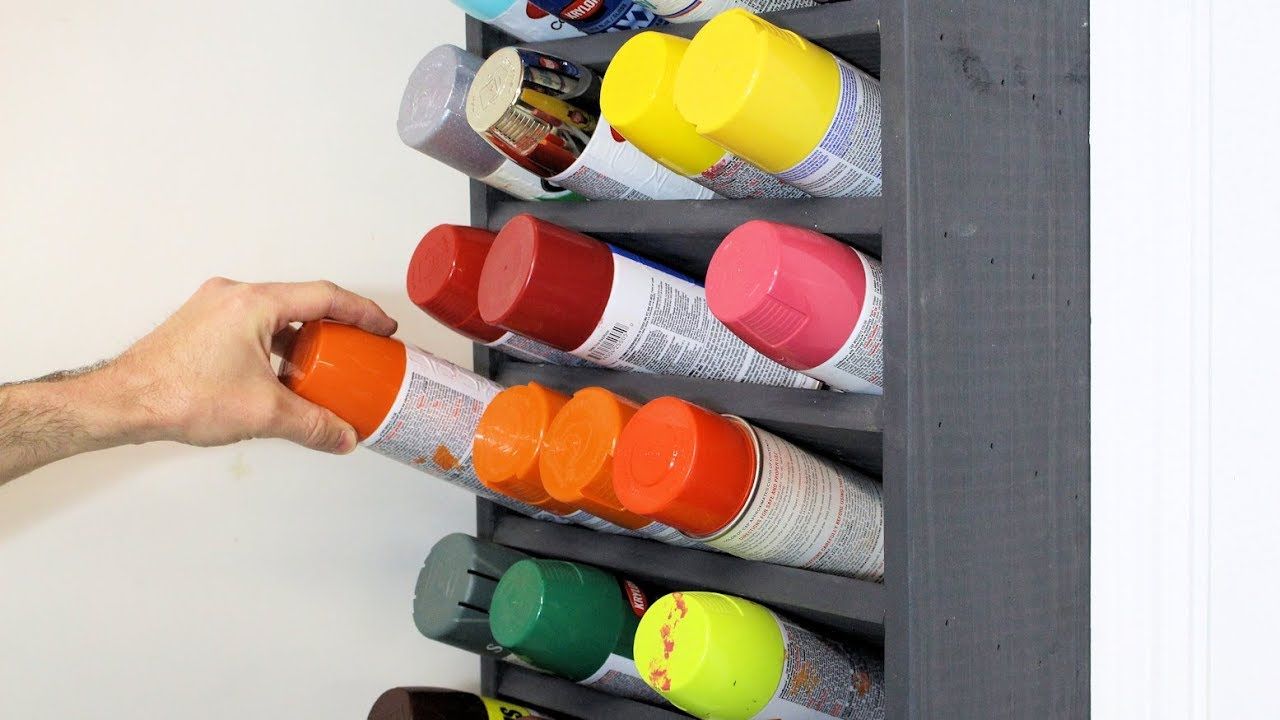

Articles
How To Store Paint Cans
Modified: March 19, 2024
Learn the best way to store paint cans and keep them fresh for future use. Find helpful articles and tips on proper paint can storage.
(Many of the links in this article redirect to a specific reviewed product. Your purchase of these products through affiliate links helps to generate commission for Storables.com, at no extra cost. Learn more)
Introduction
Welcome to our guide on how to store paint cans! Whether you’re a DIY enthusiast or a professional painter, proper paint can storage is essential for maintaining the quality and longevity of your paint supplies. In this article, we will provide you with helpful tips and guidelines to ensure that your paint cans are stored safely and effectively.
Paint cans are not just containers for paint; they are also designed to protect the paint from elements that can cause deterioration, such as exposure to air, extreme temperatures, and moisture. Improper storage can lead to the paint becoming unusable and potentially hazardous. Therefore, understanding how to store paint cans is crucial for both the integrity of your paint and the safety of those around you.
In the following sections, we will explore the importance of proper paint can storage, discuss how to select the right storage area, provide guidance on cleaning and preparing paint cans for storage, offer tips for organizing and labeling paint cans, and share advice for safe long-term storage. We will also cover the monitoring of stored paint cans and the proper disposal of old or unused paint cans.
Proper paint can storage not only preserves the quality of your paint but also saves you time and money. Instead of having to repurchase paint due to spoilage or having to deal with messy and damaged containers, you can ensure that your paint is always ready to use when you need it.
So, let’s dive into the world of paint can storage and learn how to keep your paint supplies in excellent condition for your next project!
Key Takeaways:
- Proper paint can storage is crucial for maintaining quality, reducing waste, and ensuring safety. Selecting the right storage area, cleaning and labeling cans, and monitoring their condition are key to effective paint can storage.
- Long-term paint can storage requires attention to environmental factors, regular monitoring, and responsible disposal. By following these guidelines, you can maintain the quality and usability of your paint supplies while minimizing environmental impact.
Read more: How To Store Paint Without A Can
Importance of Proper Paint Can Storage
Proper paint can storage is crucial for maintaining the quality and usability of your paint supplies. The way you store your paint cans can have a significant impact on their shelf life and effectiveness. Here are some reasons why proper paint can storage is important:
- Prolongs the Shelf Life of the Paint: Paint cans are designed to protect the paint from air, moisture, and extreme temperatures, which can cause the paint to deteriorate. By storing paint cans correctly, you can extend their shelf life and ensure that the paint remains in good condition for future use.
- Preserves the Paint’s Quality: Exposing paint to unfavorable storage conditions can lead to changes in its consistency, color, and overall quality. Proper storage practices help maintain the paint’s original properties, allowing you to achieve the desired finish and color when it’s time to use the paint.
- Reduces Waste: When paint cans are improperly stored, the paint can become unusable and may need to be discarded. By storing paint cans correctly, you can minimize waste and save money by avoiding the need to repurchase paint due to spoilage.
- Maintains Safety: Some paints contain hazardous materials and chemicals that can be harmful if mishandled or improperly stored. By storing paint cans in a safe and appropriate manner, you can reduce the risk of accidents, spills, and exposure to harmful substances.
- Facilitates Organization: Keeping your paint cans neatly organized and properly labeled makes it easier to find the paint you need for specific projects. With well-organized storage, you can quickly locate the right paint color and type, saving you time and frustration.
- Allows for Easy Accessibility: Storing paint cans in a way that allows for easy access ensures that you can grab the paint you need without hassle. Proper storage methods, such as stacking and arranging cans by color or type, make it simple to find and retrieve the paint for your current project.
By recognizing the importance of proper paint can storage and implementing appropriate storage techniques, you can prolong the life of your paint, maintain its quality, reduce waste, and ensure a safe and organized environment for your paint supplies.
Next, let’s explore how to select the right storage area for your paint cans.
Selecting the Right Storage Area
Choosing the right storage area for your paint cans is essential to ensure their longevity and usability. Here are some key factors to consider when selecting a storage area:
- Temperature and Humidity: Paint cans should be stored in an area with a consistent temperature and low humidity. Extreme temperature fluctuations and high humidity can cause paint to spoil or separate, affecting its quality. Ideally, the storage area should be cool, dry, and well-ventilated.
- Avoiding Direct Sunlight: Exposure to direct sunlight can accelerate the deterioration of paint. UV rays can cause color fading and affect the chemical composition of the paint. Choose a storage area that is away from direct sunlight to preserve the integrity of your paint cans.
- Stability and Security: The storage area should be stable and secure to prevent accidental spills or damage. Ensure that shelves or racks are sturdy and can support the weight of the paint cans. If you are using a cabinet or storage unit, make sure it is secure and has a latch or lock to keep out unwanted access.
- Away from Heat Sources: Heat can negatively impact the quality and consistency of paint. Avoid storing paint cans near heat sources such as heaters, furnaces, or hot water tanks. Heat can cause paint to dry out, thicken, or become unusable.
- Separation from Flammable Materials: Paint cans should be stored away from flammable materials or substances, such as gasoline, oil, or cleaning solvents. Combining these materials in close proximity can pose a fire hazard. Keep paints in a designated storage area separate from any potentially combustible materials.
- Children and Pet Safety: If you have children or pets in your home, it is important to choose a storage area that is out of their reach. Consider storing paint cans in a locked cabinet or on higher shelves to prevent any accidental spills or exposure to harmful substances.
Remember to assess your storage area periodically to ensure that it continues to meet these criteria. If you notice any changes in temperature, humidity, or stability, take the necessary steps to adjust your storage area or consider relocating your paint cans to a more suitable space.
Now that you’ve selected the right storage area, let’s move on to the next step: cleaning and preparing paint cans for storage.
Cleaning and Preparing Paint Cans for Storage
Before storing your paint cans, it’s important to clean them properly and prepare them for long-term storage. Here are some steps to follow:
- Inspect the Paint Cans: Start by inspecting each paint can for any signs of damage, such as dents, rust, or leaks. It’s best to discard any cans that are severely damaged or have been compromised, as they may not provide adequate protection for the paint.
- Secure the Lid: Ensure that the lids of the paint cans are tightly sealed. Use a rubber mallet or a block of wood to carefully hammer the lid in place, creating a secure seal. This will help prevent air and moisture from entering the can and causing the paint to spoil.
- Clean the Exterior: Wipe down the exterior surface of each paint can using a clean, damp cloth. This will remove any dirt, dust, or dried paint residue that could potentially contaminate the storage area or other paint cans.
- Label the Cans: Properly labeling each paint can is essential for easy identification and organization. Use a permanent marker or paint can labels to clearly indicate the color, type of paint, and date of purchase. This will make it easier to find the paint you need when it comes time for future projects.
- Organize the Cans: Arrange your paint cans in an orderly manner based on color or type. This will not only make it easier to find the desired paint but also prevent accidental spills or disruptions when searching for a specific can. Consider using storage racks or shelves to help keep the cans organized and easily accessible.
- Consider Secondary Containers: If a paint can is partially used and does not have enough paint left to create an effective seal, transfer the remaining paint into a smaller, airtight container. This will help prevent oxidation and spoilage of the paint while reducing the amount of air trapped in the container.
- Clean Up Spills: If you notice any spills or drips on the exterior of the paint cans, clean them up promptly. Use a mild detergent solution to remove any dried paint, as this can potentially interfere with the seal and contaminate other paint cans during storage.
By following these steps, you’ll ensure that your paint cans are clean, securely sealed, properly labeled, and organized for storage. This will help preserve the paint’s quality and make it easier to locate and access the desired paint when needed for future projects.
Next, we’ll explore effective ways to organize and label your paint cans to enhance convenience and efficiency.
Organizing and Labeling Paint Cans
Organizing and labeling your paint cans is crucial for easy retrieval, efficient use, and maintaining a well-organized storage area. Here are some tips to help you effectively organize and label your paint cans:
- Categorize by Color or Type: Create categories based on color or type of paint. This could include categories such as interior paints, exterior paints, primers, or specialty finishes. Separating the cans into different categories will help you locate and choose the right paint for your specific project quickly.
- Use Clear Labels: Apply clear labels to each paint can with important information such as the color name, brand, finish, and date of purchase. Clear labels allow you to easily identify the contents of each can without needing to open or disturb the seal. You can use pre-made labels or create your own using adhesive and permanent markers.
- Consider Color Coding: If you have a large collection of paint cans, consider color coding them for even easier identification. You can use color-coded stickers or markers to match the color of the paint can with the color inside. This method simplifies the process of finding the desired color without reading each label.
- Arrange in a Logical Order: Arrange the paint cans in a logical order that makes sense to you. You can organize them alphabetically, by color, or by usage frequency. Consider putting the most frequently used paints in an easily accessible location, while keeping less frequently used ones towards the back or on higher shelves to maximize space.
- Group Small Containers: If you have small containers or sample sizes of paint, consider grouping them together in a separate section. This keeps them organized and prevents them from getting misplaced among the larger paint cans.
- Utilize Storage Racks or Shelves: Invest in storage racks or shelves designed specifically for paint cans. These racks typically have dividers or slots to hold the cans securely and keep them organized. By using dedicated storage solutions, you optimize the use of space and minimize the risk of accidental spills or damage.
- Regularly Update Labels: As you use and replenish your paint supply, make sure to update the labels on the cans with any changes in color or quantity. This ensures accurate information for future reference and prevents confusion when selecting paint for your next project.
By following these tips, you’ll be able to maintain a well-organized storage area with clearly labeled paint cans. This will save you time and effort when searching for specific paint colors and types, making your painting projects more efficient and enjoyable.
Now that you have organized and labeled your paint cans, it’s time to learn how to store them safely to ensure their longevity and prevent any potential hazards. Let’s move on to the next section.
Store paint cans upside down to create a tight seal and prevent air from entering. This will help keep the paint fresh for future use.
Read more: How To Store Paint Cans In Garage
Storing Paint Cans Safely
Properly storing paint cans is essential to ensure their safety and prevent any potential hazards. Here are some guidelines to follow when storing paint cans:
- Keep in a Well-Ventilated Area: Choose a storage area that is well-ventilated to prevent the accumulation of fumes. Good airflow helps in dissipating any volatile organic compounds (VOCs) that may be present in the paint cans. Avoid storing paint cans in small, enclosed spaces or areas with poor ventilation.
- Store Upright: It is recommended to store paint cans in an upright position to prevent leakage and maintain proper sealing. Storing cans upside down or on their sides can cause paint to leak or mix, making it difficult to use and potentially damaging to other stored items.
- Avoid Extreme Temperatures: Extreme temperatures can negatively affect the quality and consistency of paint. Store paint cans in a location where the temperature remains within the manufacturer’s recommended range. Avoid storing paint cans in areas prone to extreme heat or cold, such as garages or attics.
- Protect from Freezing: If you live in an area with freezing temperatures, ensure that your paint cans are stored in a frost-free environment. Frozen paint can become unusable and may separate or crack the container. If necessary, move the paint cans to a climate-controlled area to prevent freezing.
- Avoid Stacking Too High: While it’s important to maximize your storage space, avoid stacking paint cans too high. Stacking them too high can increase the risk of cans falling and potentially causing damage or injury. If you need to stack cans, use sturdy shelving or racks to ensure stability and prevent accidents.
- Keep Away from Children and Pets: Store paint cans in a location that is out of reach of children and pets. Ensure that the storage area has a secure door or lock to prevent accidental access. Paint cans, especially those with hazardous materials, should only be handled by adults who understand the proper safety precautions.
- Store Away from Ignition Sources: Avoid storing paint cans near ignition sources such as open flames, spark-generating equipment, or electrical outlets. Paint cans with flammable materials can pose a fire hazard, so it’s crucial to keep them well away from potential sources of ignition.
- Regularly Inspect for Damage: Periodically inspect your stored paint cans for any signs of damage, leaks, or deterioration. If you notice any issues, such as rust, bulging lids, or strange odors, handle the cans with caution and consider disposing of them properly.
By following these safety guidelines, you can store paint cans in a manner that minimizes risks, protects your investment, and ensures the safety of your surroundings.
Now that you know how to store paint cans safely, let’s move on to some tips for long-term storage to help you maintain the quality of your paint for an extended period.
Tips for Long-Term Paint Can Storage
If you plan to store paint cans for an extended period, it’s important to take additional measures to ensure the quality and usability of the paint. Here are some tips for long-term paint can storage:
- Keep Paint in a Stable Environment: Choose a storage area that maintains a consistent temperature and low humidity levels to prevent paint from spoiling or deteriorating. Fluctuations in temperature and humidity can cause paint to separate or thicken, rendering it unusable.
- Prevent Exposure to Light: Light exposure can affect the composition and color of paint over time. Store paint cans in a dark or dimly lit area to protect them from the harmful effects of UV rays. If possible, consider using opaque containers or cover paint cans with a dark cloth or plastic sheet.
- Monitor for Pest Infestation: Inspect your storage area regularly for signs of pests such as insects or rodents. Paint cans can attract pests that may chew through containers or contaminate the paint. If you notice any signs of infestation, take appropriate measures to eliminate the pests and ensure the integrity of your paint cans.
- Rotate Stored Paint: If you have multiple cans of the same paint color, consider rotating them periodically. This involves using the oldest paint cans first to avoid wastage and ensure that all the paint gets used before it starts to spoil. Proper rotation helps ensure that you always have fresh paint on hand.
- Seal Partially Used Cans: If you have partially used paint cans, ensure they are sealed tightly to prevent air from entering. Air exposure can cause the paint to dry out or form a skin on the surface, making it difficult to reuse. Use plastic wrap or a rubber band to tightly secure the lid and create an airtight seal.
- Check for Condensation: Periodically inspect the paint cans for any signs of condensation inside or outside the containers. Condensation can lead to mold growth or moisture damage to the paint. If you notice any moisture, wipe it off carefully and consider moving the cans to a drier storage area if necessary.
- Document Paint Inventory: Keep a detailed inventory of the paint cans you have in storage. This includes the color, type, quantity, and purchase date of each can. This inventory list will help you track your paint supplies and ensure that you use them before they expire or lose their quality.
- Consider Repackaging: If you have a significant amount of paint left in bulky cans, you may consider repackaging it into smaller, airtight containers. Smaller containers reduce the amount of air trapped with the paint, minimizing the chances of spoilage or drying out. Be sure to label the new containers accurately.
By following these tips, you can ensure that your paint cans are stored properly for long-term storage. With careful attention to storage conditions and maintenance, you can extend the shelf life of your paint and have it ready for use whenever you need it.
Now that you’re armed with knowledge and tips for long-term paint can storage, let’s move on to monitoring stored paint cans to maintain their quality and prevent any potential issues.
Monitoring Stored Paint Cans
Regularly monitoring your stored paint cans is essential to ensure their quality and detect any potential issues early on. By staying vigilant, you can prevent spoilage, maintain the integrity of the paint, and make adjustments as needed. Here are some key steps to effectively monitor your stored paint cans:
- Inspect for Signs of Spoilage: Regularly examine your paint cans for any signs of spoilage, such as a foul odor, unusual texture, or visible mold growth. If you detect any of these signs, it is best to dispose of the affected paint cans properly and avoid using the spoiled paint.
- Check for Separation or Settling: Occasionally, gently shake or stir the paint cans to check for any separation or settling. Over time, certain paint formulas may naturally separate or settle, which can affect the consistency and quality of the paint. If you notice significant separation or clumping, consider remixing the paint thoroughly before use.
- Assess Paint Color and Texture: Pay attention to the color and texture of your stored paint. Over time, paint can change in color due to exposure to light, air, or other environmental factors. If you notice significant color changes or texture variations, it’s best to test a small amount of the paint on a sample surface before using it on a larger project.
- Check for Rust or Corrosion: Inspect the paint cans for any signs of rust or corrosion on the surfaces or lids. Rust can compromise the integrity of the can, leading to leaks or the introduction of contaminants into the paint. If you notice rust, it’s recommended to transfer the paint into a new, clean container to prevent further issues.
- Ensure Proper Lid Sealing: Regularly check the lid seals of your paint cans to ensure they are still intact and airtight. If you notice any loose or damaged lids, replace them immediately to maintain the paint’s freshness and prevent air or moisture from entering the container.
- Rotate Paint Inventory: Periodically review your inventory of stored paint cans and rotate them as necessary. Use older cans before newer ones, ensuring that paint gets used before its expiration date or before it starts to deteriorate. This rotation practice helps ensure that your paint supply remains fresh and usable.
- Maintain Storage Conditions: Continuously monitor the storage conditions of your paint cans, including temperature and humidity levels. Make adjustments as needed to maintain a stable and suitable environment for the paint. Avoid storing the cans in areas prone to extreme temperature fluctuations, high humidity, or direct sunlight.
- Update Inventory and Procure Fresh Paint: Regularly update your inventory records and make note of any paint cans that are nearing their expiration date or show signs of deterioration. Begin procuring fresh paint for future projects to ensure the availability of high-quality paint whenever you need it.
By consistently monitoring your stored paint cans, you can catch any potential issues early on and take appropriate measures to address them. This proactive approach ensures that your paint remains in optimal condition and ready for use.
Now that you know how to effectively monitor your stored paint cans, let’s move on to the important topic of disposing of old or unused paint cans responsibly.
Disposal of Old or Unused Paint Cans
Proper disposal of old or unused paint cans is important to protect the environment and ensure safety. Here are some guidelines to follow when disposing of paint cans:
- Check Local Regulations: Before disposing of paint cans, check your local regulations regarding the proper disposal methods. Different regions may have specific guidelines or requirements for disposing of hazardous or non-hazardous waste, including paint cans.
- Empty the Paint Cans: If there is only a small amount of paint left in the cans, you can allow it to air dry or use absorbent materials to soak it up. Once the paint is dry, it can typically be disposed of as regular household waste. Consult local guidelines to confirm the specific disposal requirements for dried paint.
- Recycling Options: Empty metal paint cans can often be recycled along with other metal recyclables. Just make sure to clean out any remaining paint before recycling. Plastic paint cans may or may not be accepted for recycling depending on your local recycling facilities. Check with your local recycling center for specific guidelines.
- Hazardous Waste Collection: If you have paint cans with leftover paint and your municipality offers hazardous waste collection programs, take advantage of those services. They can properly handle and dispose of paint cans containing hazardous materials. Contact your local waste management or environmental agency for information on hazardous waste collection in your area.
- Donate or Share: If you have usable, unopened paint cans that you no longer need, consider donating them to a local community organization, school, or nonprofit. Many organizations welcome paint donations for community improvement projects. Alternatively, you can also share unused paint with friends, family, or neighbors who may have a use for it.
- Properly Seal and Store: If you plan to store paint cans instead of disposing of them immediately, make sure to seal them tightly to prevent leaks, spills, or environmental contamination. Store them in a safe and secure location until you can properly dispose of them or find a use for them.
- Responsible Disposal Methods: If you have large quantities of paint or are unsure of how to properly dispose of paint cans, contact a professional waste disposal company. They can guide you on the appropriate methods for disposing of paint cans and any related hazardous materials.
Remember, proper disposal of paint cans helps protect the environment, prevent potential hazards, and comply with local regulations. By taking the time to dispose of them responsibly, you contribute to a cleaner and safer community.
Now that you understand the importance of paint can disposal, let’s conclude our guide on storing paint cans effectively.
Read more: How To Store Spray Paint Cans
Conclusion
Properly storing paint cans is essential for maintaining their quality, preventing waste, and ensuring the safety of those around you. Throughout this guide, we have explored the importance of correct paint can storage and provided valuable information and tips to help you store your paint cans effectively.
We started by emphasizing the significance of proper paint can storage, including its impact on prolonging the shelf life of paint, preserving its quality, reducing waste, maintaining safety, facilitating organization, and ensuring easy accessibility.
We then discussed how to select the right storage area, considering factors such as temperature, humidity, stability, and security. By choosing an appropriate environment for your paint cans, you can prevent spoilage and maintain the integrity of the paint.
Next, we covered the cleaning and preparation of paint cans for storage, highlighting the importance of inspecting the cans, securing the lids, cleaning the exteriors, labeling them accurately, and organizing them in a logical manner.
We also provided tips for organizing and labeling paint cans, offering suggestions such as categorizing by color or type, using clear labels, color coding, arranging cans in a logical order, and utilizing storage racks or shelves to keep the cans organized and easily accessible.
In terms of safety, we discussed the importance of storing paint cans in a well-ventilated area, keeping them upright, avoiding extreme temperatures, protecting them from freezing, and ensuring they are stored away from ignition sources and out of the reach of children and pets.
Additionally, we provided tips for long-term paint can storage, including strategies to keep paint in a stable environment, prevent exposure to light, monitor for pest infestation, rotate paint inventory, seal partially used cans, check for condensation, maintain storage conditions, and update your inventory regularly.
Lastly, we discussed the responsible disposal of old or unused paint cans, emphasizing the importance of adhering to local regulations, emptying the cans properly, exploring recycling options, utilizing hazardous waste collection programs, considering donation or sharing, properly sealing and storing cans for future use, or seeking assistance from professional waste disposal services when needed.
By following the advice and guidelines provided in this guide, you can ensure that your paint cans are stored safely, efficiently, and responsibly. This will enable you to maintain the quality of your paint, reduce waste, and have easy access to the colors and finishes you need for your various projects.
Remember, how you store your paint cans directly affects their usability and lifespan. By keeping them in a suitable environment, organizing and labeling them effectively, monitoring their condition, and disposing of them responsibly, you can optimize your paint storage practices and enjoy successful painting endeavors for years to come.
Happy painting and happy storing!
Frequently Asked Questions about How To Store Paint Cans
Was this page helpful?
At Storables.com, we guarantee accurate and reliable information. Our content, validated by Expert Board Contributors, is crafted following stringent Editorial Policies. We're committed to providing you with well-researched, expert-backed insights for all your informational needs.
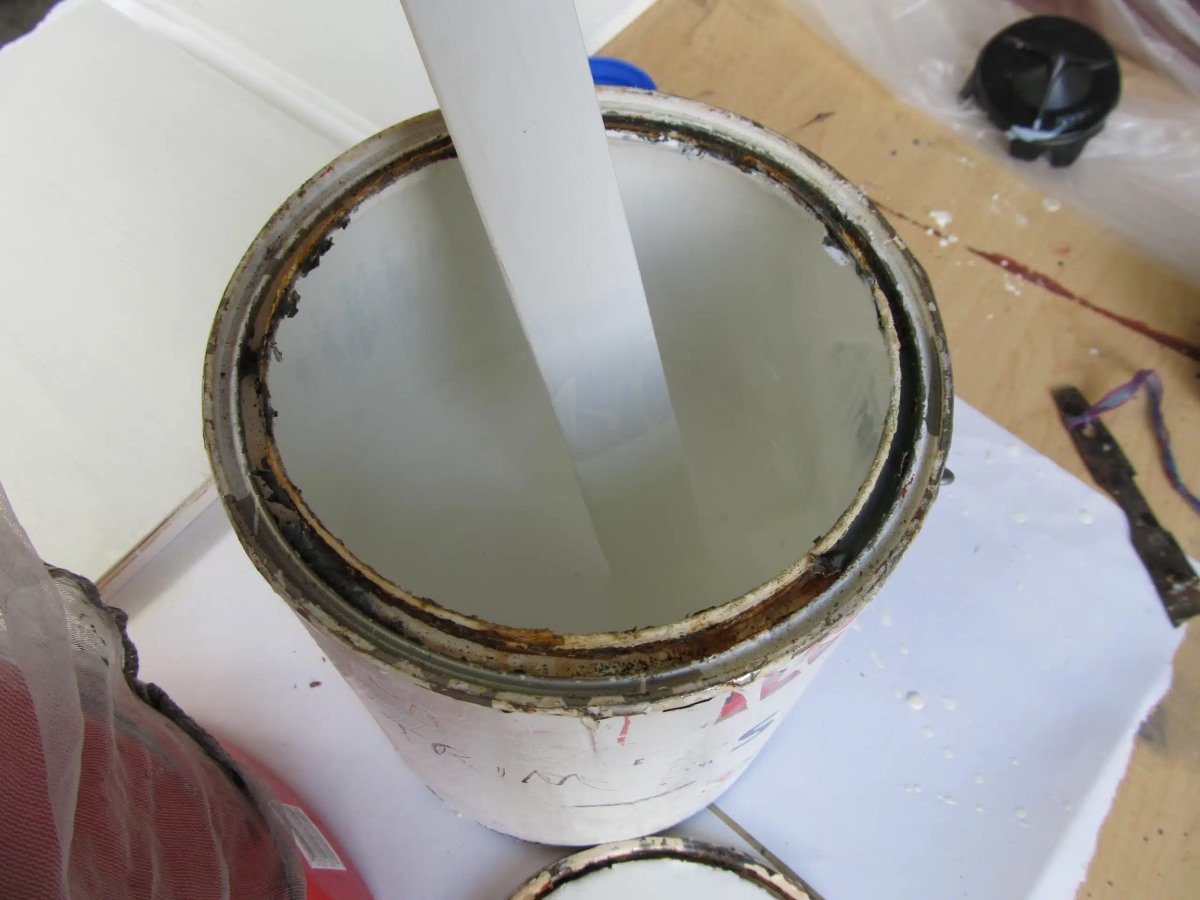
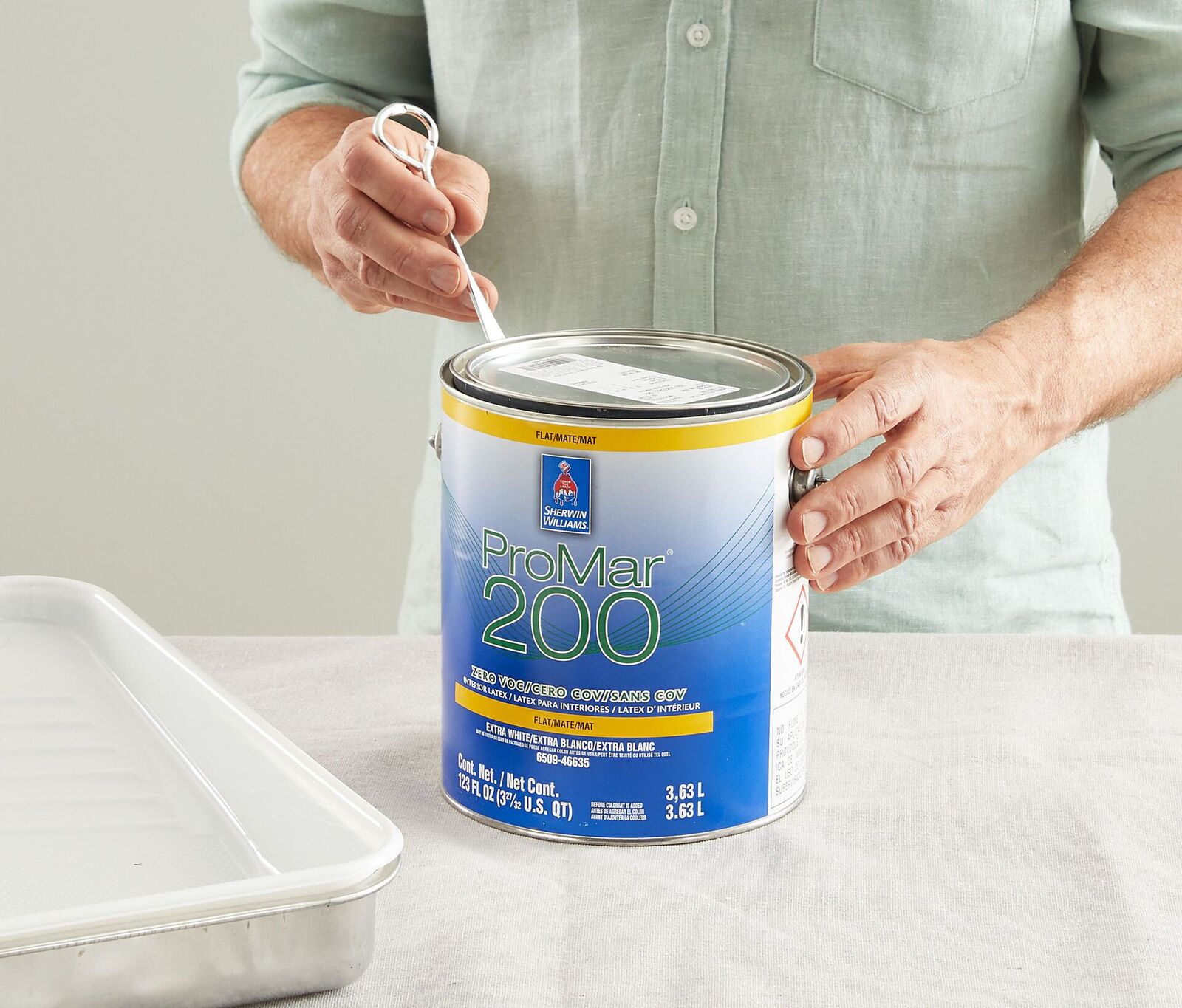

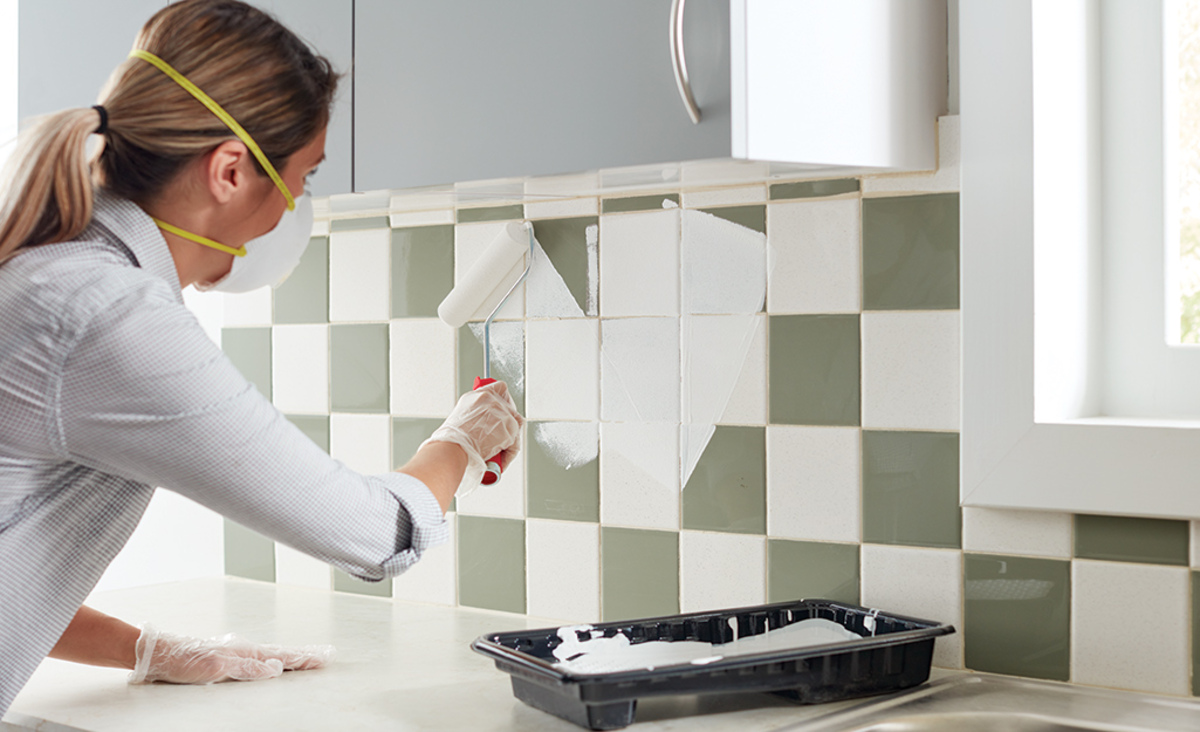
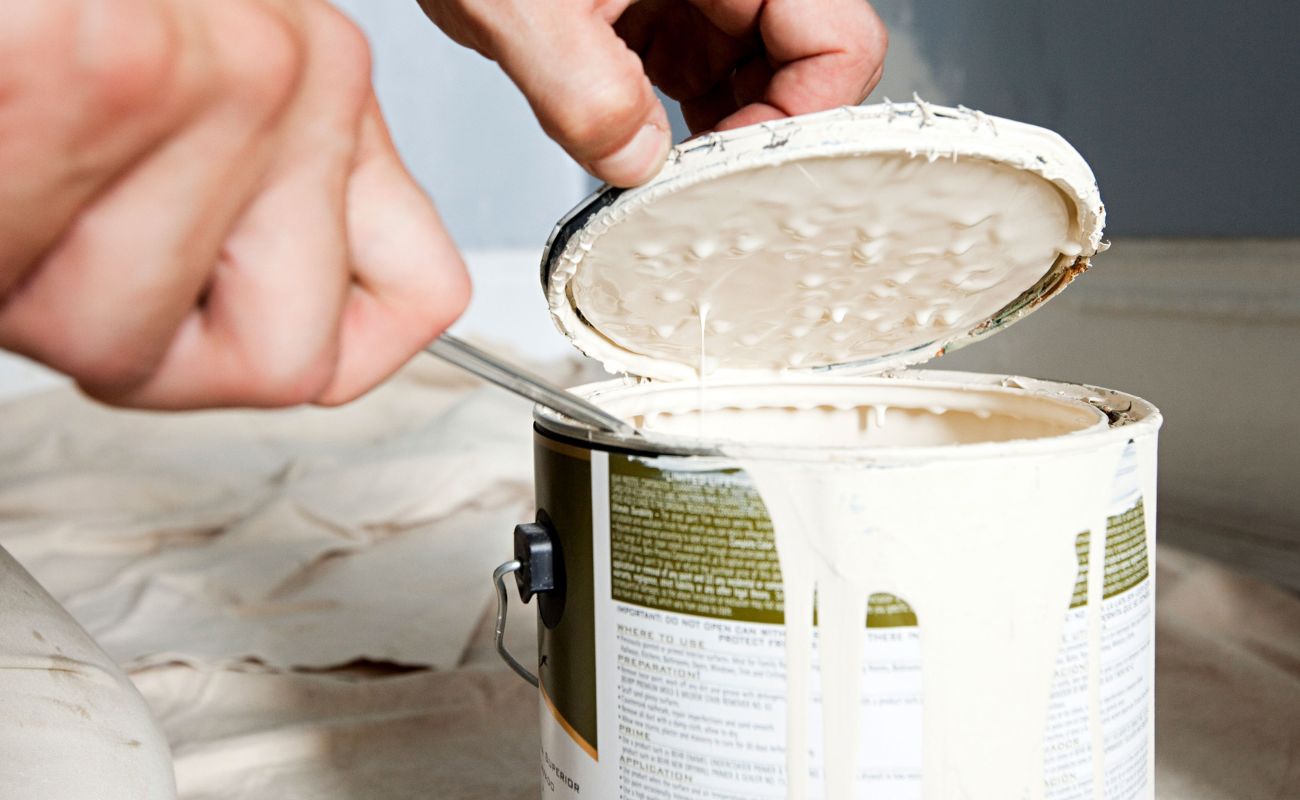


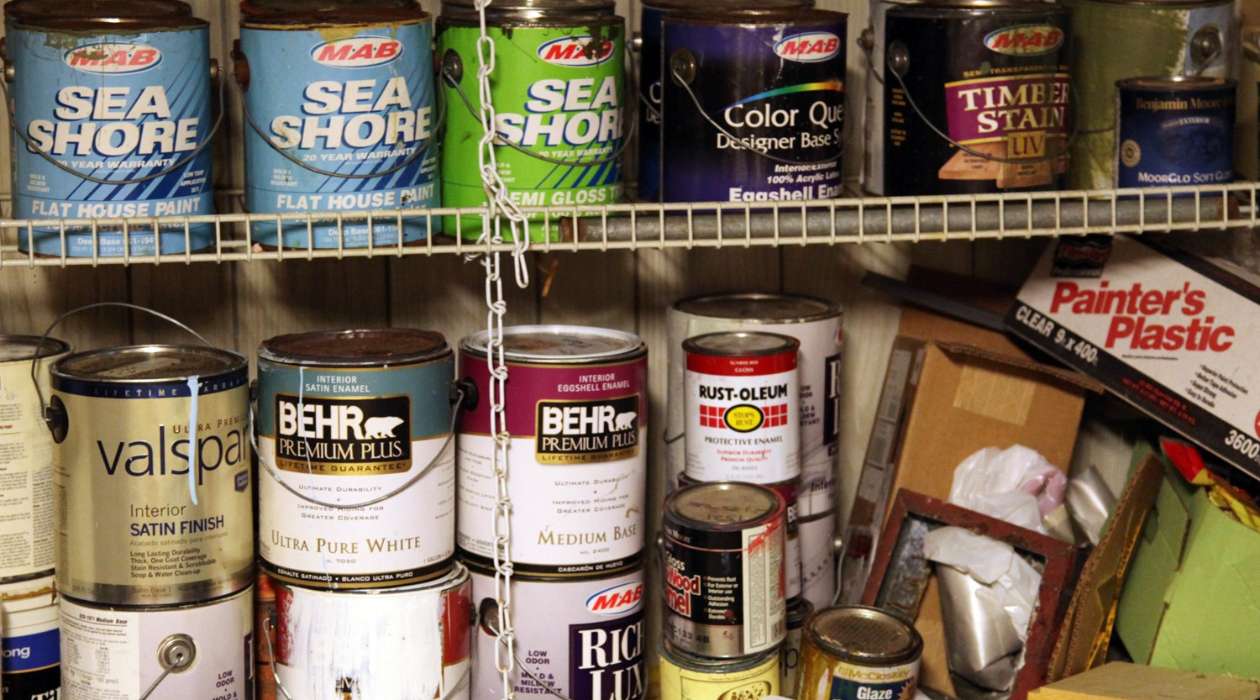

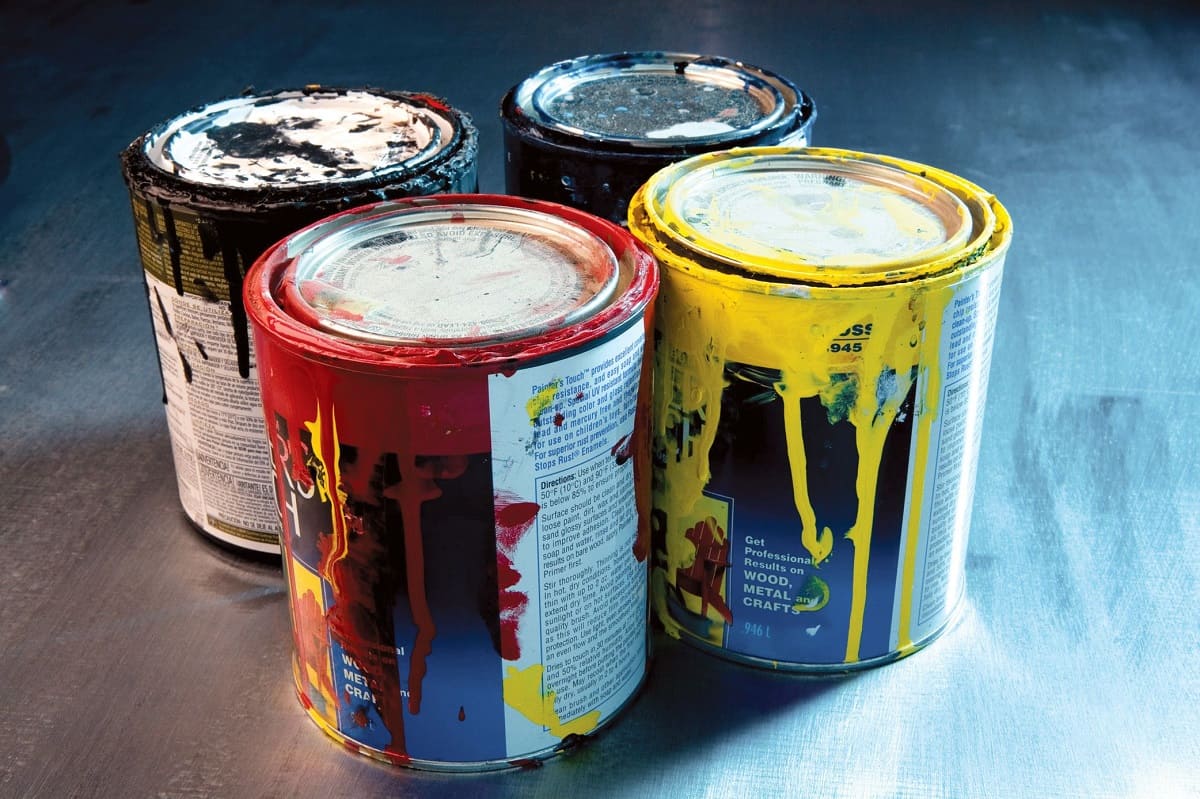


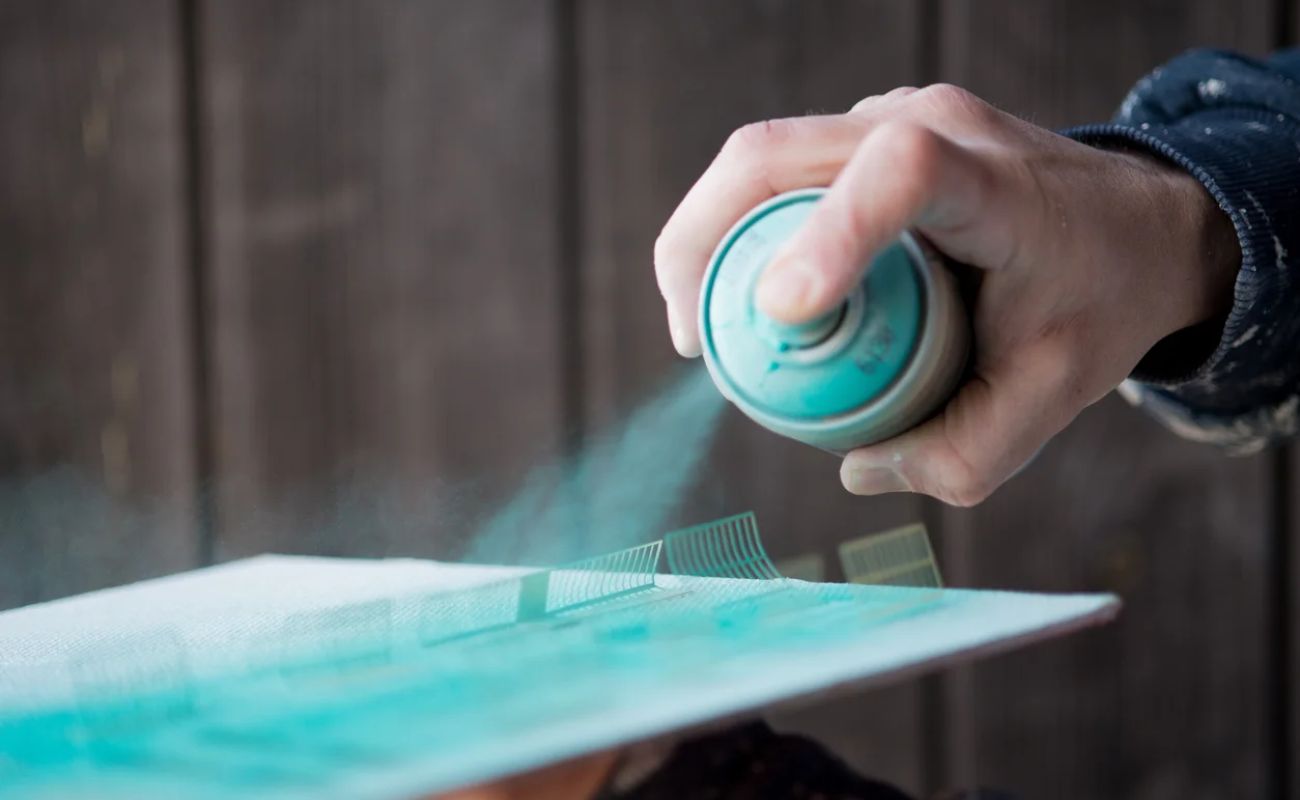

0 thoughts on “How To Store Paint Cans”